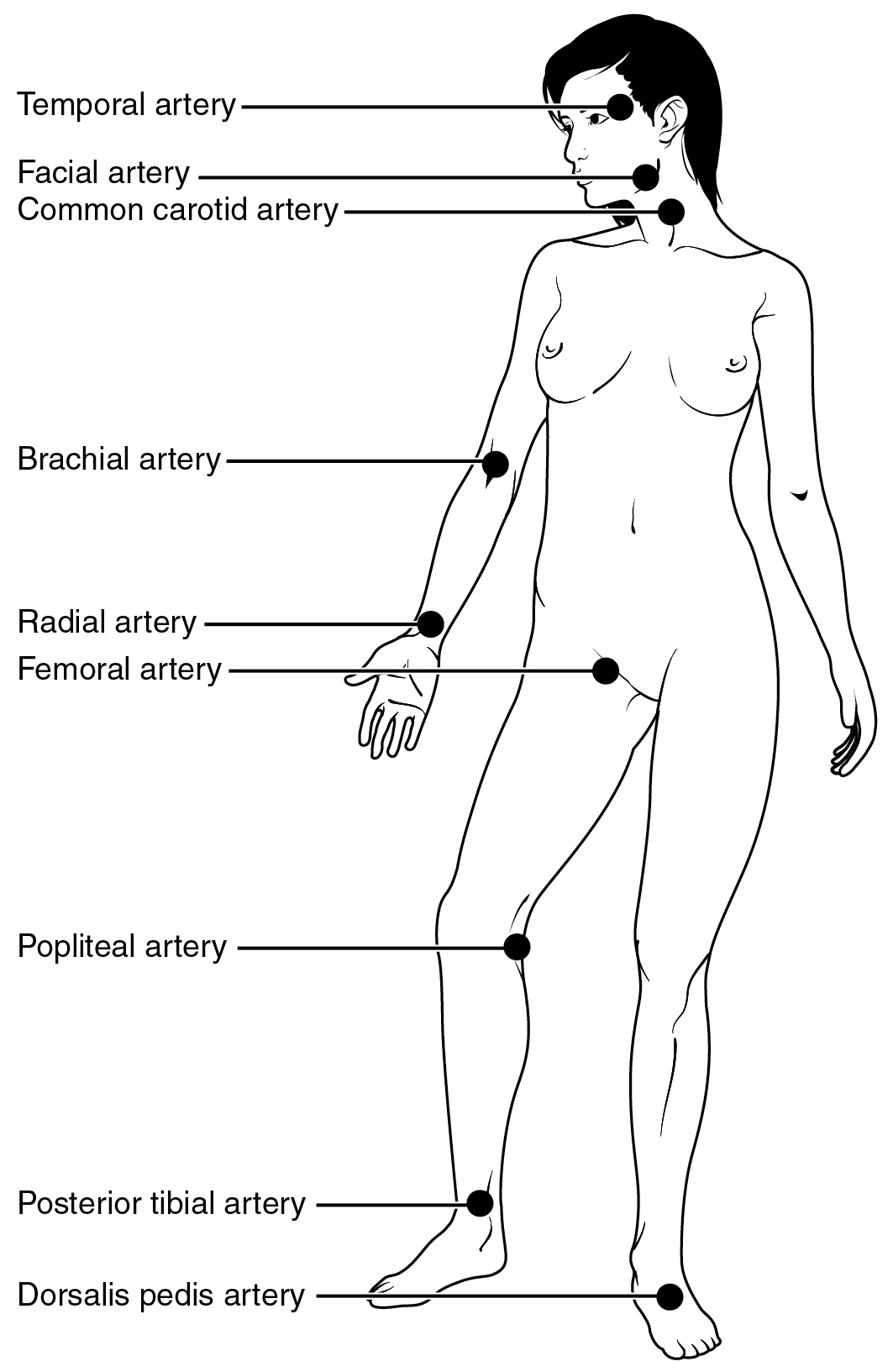An impulse can be felt over an artery that lies near the surface of the skin. The impulse results from alternate expansion and contraction of the arterial wall because of the beating of the heart. When the heart pushes blood into the aorta, the blood’s impact on the elastic walls creates a pressure wave that continues along the arteries. This impact is the pulse. All arteries have a pulse, but it is most easily felt at points where the vessel approaches the surface of the body.

The radial pulse is located on the thumb and wrist The carotid pulse is located on the side of your neck (the carotid artery) The brachial pulse is found in the inner elbow The temporal pulse is. All arteries have a pulse, but it is most easily felt at points where the vessel approaches the surface of the body. To get more great tips please subscribe to our youtube channel for nurses preparation https://www.youtube.com/channel/UC28WUIGPjv-QMK6LNocYPLQ.
Describes the 10 pulse sites on the human body. Terms in this set (17) temporal artery. Palpated on the temple. Found in the neck. Pulse taken with a stethoscope and near the apex of the heart-between 4 and 5 intercostal muscle of the ribs. Brachial artery. All pulse sites except apical exist on both sides of the body.


Sites Of Pulse
The pulse is readily distinguished at the following locations: (1) at the point in the wrist where the radial artery approaches the surface; (2) at the side of the lower jaw where the external maxillary (facial) artery crosses it; (3) at the temple above and to the outer side of the eye, where the temporal artery is near the surface; (4) on the side of the neck, from the carotid artery; (5) on the inner side of the biceps, from the brachial artery; (6) in the groin, from the femoral artery; (7) behind the knee, from the popliteal artery; (8) on the upper side of the foot, from the dorsalis pedis artery.
Types Of Pulses In The Body
The radial artery is most commonly used to check the pulse. Several fingers are placed on the artery close to the wrist joint. More than one fingertip is preferable because of the large, sensitive surface available to feel the pulse wave. While the pulse is being checked, certain data are recorded, including the number and regularity of beats per minute, the force and strength of the beat, and the tension offered by the artery to the finger. Normally, the interval between beats is of equal length.

